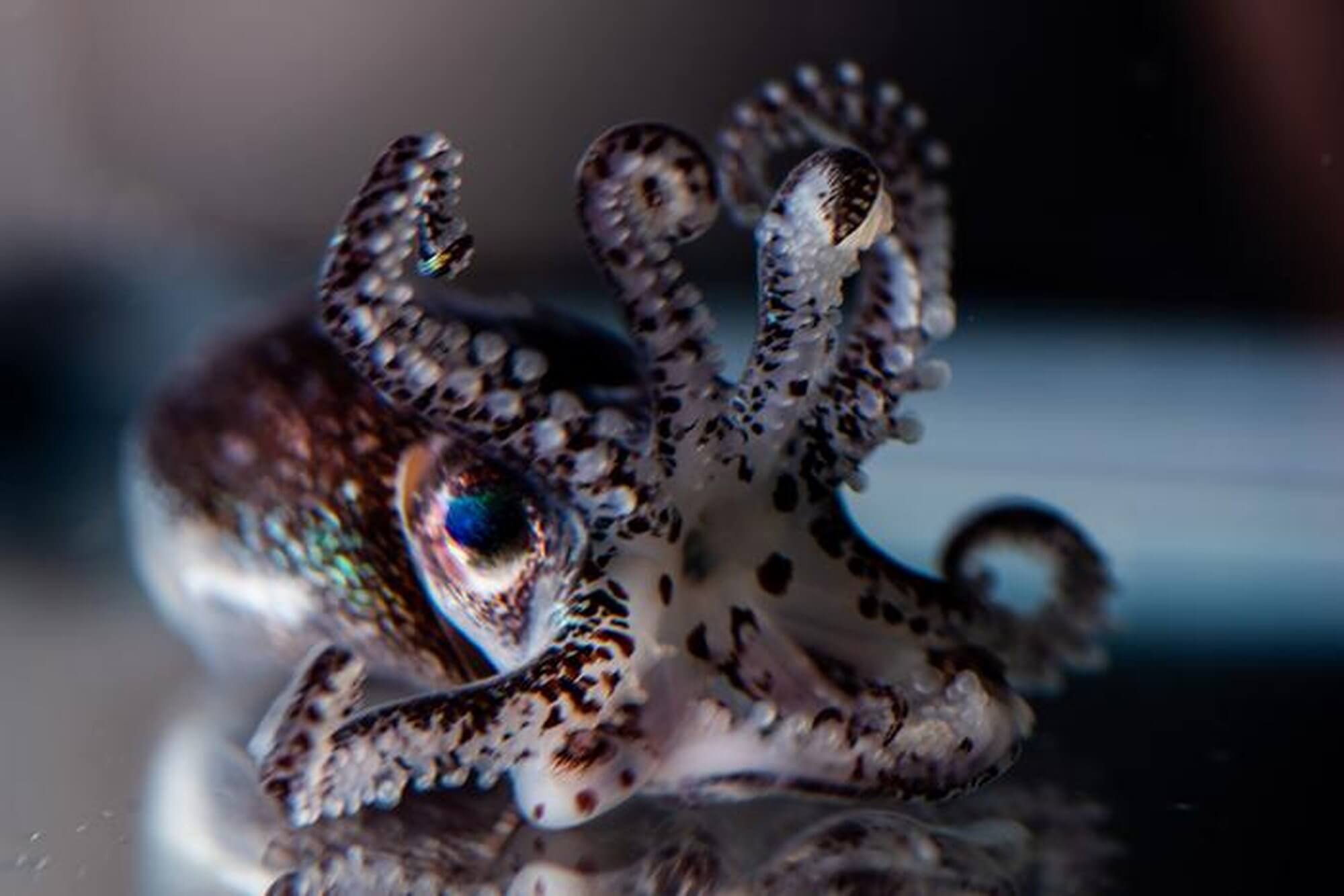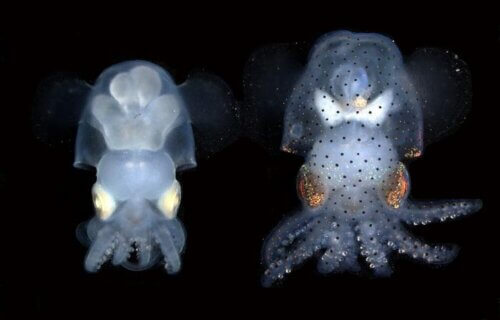WOODS HOLE, Mass. – Exciting developments have emerged from the Marine Biological Laboratory (MBL), where a team of scientists has successfully created an “albino strain” of the hummingbird bobtail squid, Euprymna berryi. This groundbreaking achievement has produced a nearly transparent organism that allows scientists to observe the nervous system of a living cephalopod with unprecedented clarity.
“For the first time, a genetically engineered cephalopod has been bred through multiple generations, establishing E. berryi as a highly promising model organism for neurobiological and other research endeavors,” says senior scientist Joshua Rosenthal in a media release.
Cephalopods, including squids, octopuses, and cuttlefish, possess an incredibly intricate nervous system and behavior. Unlike most invertebrates, they can learn complex tasks, solve mazes, use tools, and exhibit observational learning. These fascinating creatures possess astonishing abilities such as instantaneous camouflage, manipulation of their surroundings using their arms and tentacles, and even self-editing of RNA to adapt to colder environments.
While cephalopods have captivated scientists for their unique biology, the lack of a suitable genetic model organism has limited our understanding of their complex traits. Unlike the extensive research conducted on fruit flies and mice, which has unveiled the genetic foundations of development, behavior, and evolution, cephalopod biology has remained relatively unexplored. This new study presents Euprymna berryi as an ideal candidate for a model cephalopod due to its ease of breeding in the laboratory and its genetic modifiability.
To establish the albino lineage of E. berryi, the research team employed CRISPR-Cas9 genome editing to deactivate two genes responsible for pigmentation enzymes. The resulting albino squid exhibited transparent characteristics, allowing researchers to gain insight into its brain activity. By inserting a fluorescent dye into the squid’s optic lobe, which glows upon detecting calcium release during neuronal firing, scientists could visualize brain activation when images were projected onto a screen in front of the squid. However, this technique was hindered in wild-type squid due to their skin pigmentation, making the dye difficult to observe.

This breakthrough discovery opens new avenues for studying gene function and cephalopod brains with unparalleled precision. By breeding albino squid, scientists can investigate signal relay mechanisms within cephalopod brains and conduct experiments utilizing calcium-activated dye. Furthermore, this research demonstrates the feasibility of genetically modifying these squid for studying other aspects of their biology.
During the study, the team made an unexpected finding related to E. berryi’s biology. While deactivating the first pigmentation gene, TDO, was expected to produce an albino squid, the offspring of E. berryi still exhibited pigmentation. Upon further investigation, the team discovered that a second enzyme, called IDO, was also responsible for generating pigment in E. berryi. This protein was previously unknown in cephalopods, raising intriguing questions about why E. berryi possesses two enzymes with seemingly redundant functions.
The study is published in the journal Current Biology.
You might also be interested in:
- Eating seafood immoral? Octopuses, squid, crabs have emotions and feel pain, study says
- Octopuses give scientists even more evidence that they dream just like people
- What do octopuses think about? Scientists are finally seeing their mysterious brain waves

